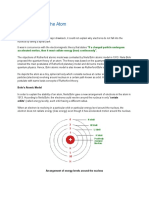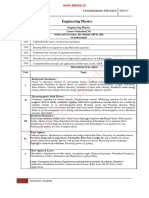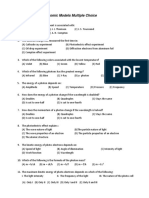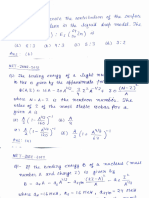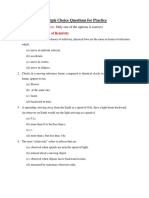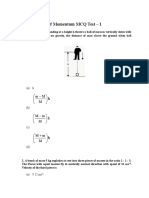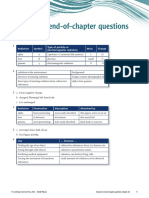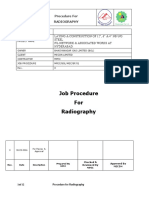100% found this document useful (1 vote)
349 views41 pagesNuclear and Particle Physics Questions
The document contains multiple choice questions about nuclear physics concepts. It covers topics like the size of atomic nuclei, nuclear binding energy, radioactive decay, and nuclear models. Some key points addressed are:
- The size of atomic nuclei is around 10-15 meters.
- Nuclear binding energy and magnetic moments can be explained by the proton-electron hypothesis.
- Numbers of protons and neutrons can confer nuclear stability, known as "magic numbers".
- Semi-empirical mass formula and liquid drop model can be used to calculate binding energies and predict nuclear stability.
- Positron emission, electron capture, alpha decay, and beta decay are examples of radioactive decay processes.
Uploaded by
Sid KCopyright
© © All Rights Reserved
We take content rights seriously. If you suspect this is your content, claim it here.
Available Formats
Download as PDF, TXT or read online on Scribd
100% found this document useful (1 vote)
349 views41 pagesNuclear and Particle Physics Questions
The document contains multiple choice questions about nuclear physics concepts. It covers topics like the size of atomic nuclei, nuclear binding energy, radioactive decay, and nuclear models. Some key points addressed are:
- The size of atomic nuclei is around 10-15 meters.
- Nuclear binding energy and magnetic moments can be explained by the proton-electron hypothesis.
- Numbers of protons and neutrons can confer nuclear stability, known as "magic numbers".
- Semi-empirical mass formula and liquid drop model can be used to calculate binding energies and predict nuclear stability.
- Positron emission, electron capture, alpha decay, and beta decay are examples of radioactive decay processes.
Uploaded by
Sid KCopyright
© © All Rights Reserved
We take content rights seriously. If you suspect this is your content, claim it here.
Available Formats
Download as PDF, TXT or read online on Scribd
/ 41

